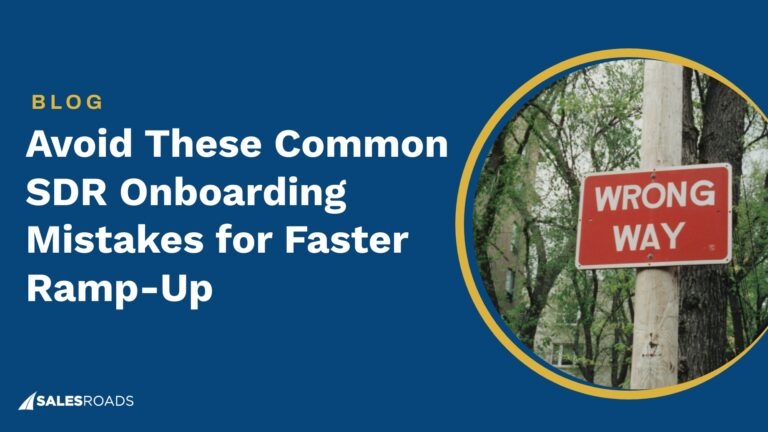The need for adaptive and well-thought-out sales strategies has never been more paramount. B2B sales are swiftly evolving due to the integration of AI, shifting customer expectations, and increased competition. These factors are crucial in shaping how businesses devise and execute their strategies.
To thrive in this environment, a sales approach must be both dynamic and adaptable, closely aligned with the intricate needs of your ICP.
The Core Components of an Effective B2B Sales Strategy
A well-structured sales strategy is pivotal in steering towards growth and success. It not only aligns with your goals and resources but also adapts to the changing market dynamics and customer needs.
The absence of it can lead to misdirected efforts, inefficient use of resources, and ultimately, lost opportunities for growth and profitability.
There are several key components of a good sales strategy, each contributing significantly to its overall effectiveness:
Your target market
The cornerstone of any effective sales strategy is a deep understanding of the target market. This component is critical as it lays the foundation for all other elements of the sales process.
Understanding your target market involves comprehending the specific needs, pain points, and decision-making processes. This knowledge enables the creation of tailored solutions that resonate with potential customers.
It enhances the relevance and effectiveness of your sales messages and proposals, allowing for a more consultative selling approach, where solutions are directly aligned with the client’s specific needs.
Without a deep understanding of your target market, sales efforts may become generic and less effective. This can result in lower conversion rates, wasted resources on unqualified leads, and a potential disconnect between what the company offers and what the market truly needs.
Value proposition and differentiation
Value proposition and differentiation are key to standing out in a competitive B2B environment. They form the basis of why clients should choose your product over others.
A strong value proposition clearly communicates the unique benefits and advantages of your offerings. Differentiation, on the other hand, sets you apart from competitors, highlighting the distinctive features and benefits that only your product offers.
An effective strategy helps in attracting and retaining customers. They make your offerings more compelling and relevant, leading to increased sales and market share.
Without a clear value proposition and differentiation, you may get lost in a sea of similar products or services. This can lead to price wars, decreased margins, and a struggle to maintain a loyal customer base.
Relationship building and networking
In B2B sales, relationships and networks play a pivotal role. Long-term partnerships and extensive networking are essential components of a successful sales strategy.
Building strong relationships fosters trust and credibility, which are crucial in B2B transactions where contracts are often large and involve significant commitment.
Effective relationship building leads to more referrals, higher client retention, and a deeper understanding of your clients’ evolving needs. It allows sales professionals to anticipate changes and adjust their approach accordingly.
Without strong relationships and a robust network, sales efforts might become transactional, reducing customer loyalty and potentially missing out on larger, long-term contracts and opportunities.
Customized sales approach
A one-size-fits-all approach is rarely effective in B2B sales. Customization is key to addressing the specific needs of each decision-maker. It demonstrates an understanding of unique client challenges and requirements, helping in creating solutions that are specifically tailored to meet these individual needs.
A customized approach enhances the relevance and impact of your sales pitch, increasing the likelihood of conversion. It shows prospects that you are invested in solving their specific problems, leading to stronger relationships.
A generic approach can alienate potential clients who feel their specific needs are not being met, leading to lost sales opportunities and diminished client satisfaction.
CRM and sales enablement tools
CRM systems and sales enablement tools are vital for managing client information and interactions efficiently.
These tools help in organizing client data, tracking sales progress, and providing insights into customer behavior and preferences. They streamline the sales process, making it more efficient and effective.
By leveraging CRM and sales enablement tools, sales teams can better target their efforts, personalize their interactions, and close deals more effectively. These tools also assist in maintaining consistent communication and follow-up.
Without these tools, managing customer relationships and sales processes can become chaotic, leading to missed opportunities, inefficiencies, and a lack of personalized customer engagement.
Performance metrics and analysis
Measuring and analyzing sales performance is critical for understanding the effectiveness of your sales strategy.
Performance metrics provide valuable insights into what is working and what isn’t, guiding strategic decisions and improvements. Regular analysis of these metrics helps in refining sales tactics, improving efficiency, and maximizing ROI. It enables your team to focus on the most productive activities and strategies.
Without proper metrics and analysis, it’s challenging to assess the success of sales efforts, leading to potential misallocation of resources and missed opportunities for optimization.
Step-by-Step Guide: How to Develop a Crushing Sales Strategy
Developing an effective B2B sales strategy involves a series of well-defined steps. Each step is crucial in building a framework that not only captures the essence of your market but also positions your business for sustained growth and success.
Here’s a detailed step-by-step guide:
Step 1: Conduct a market analysis
A thorough market analysis is the foundation of a sound sales strategy. It involves a deep dive into understanding the environment in which you’re operating, the competition you’re facing, and the opportunities available for your business.
- Begin by understanding your industry’s landscape. Look at the market size, growth rate, trends, and key players. Analyze industry reports, white papers, and market research studies to gather a comprehensive overview.
- Identify your direct and indirect competitors. Understand their products, pricing, sales and marketing strategies, and market share. Tools like SWOT analysis can be instrumental in analyzing both your competitors’ strengths and weaknesses and your own.
- Keep a pulse on evolving customer needs and market trends. This could involve surveying potential customers, attending industry conferences, and staying updated with industry publications.
- Be aware of any regulations or compliance requirements in your industry. This understanding can impact your sales approaches.
- Stay attuned to technological advancements and innovation trends in your industry. These can present both opportunities and threats to your business.
- Utilize data analytics tools to process and analyze the information gathered. This analysis should inform your business strategy, helping you to identify opportunities and mitigate risks.
- Market analysis is not a one-time task. Continuously monitor the market for changes and adjust your strategy accordingly.
Step 2: Define your target audience
Defining your target audience in B2B sales is a critical step that requires a deep understanding of who will benefit most from your product.
This process involves creating detailed buyer personas that represent your ideal customer. A buyer persona is a semi-fictional representation of your ideal customer based on market research and real data about your existing customers.
- Begin by analyzing your current customer base. Look for common characteristics and interests. Which types of businesses are buying your product or service? What are their industry sectors, company sizes, and market positions?
- Conduct interviews or surveys with your existing customers to understand why they chose your product, what problems it solves for them, and what they value most about your offering.
- Understanding the challenges your target audience faces is crucial. What are the specific problems they encounter in their businesses that your product or service can solve? This understanding can come from customer feedback, online forums, social media listening, and industry conferences.
- In B2B sales, the decision-making process can be complex, often involving multiple stakeholders. Understand who is involved in the decision-making process, their roles, and their influence.
- Based on this information, create detailed buyer personas. Include demographic information, business roles, goals, challenges, pain points, and preferred communication channels. Give each persona a name and a narrative. This helps in visualizing them as real people, which is essential for tailoring your sales strategies.
- Your buyer personas should not be static. As market conditions change, as you receive new customer feedback, and as your product evolves, so too should your personas. Regularly review and update your personas to ensure they remain accurate and relevant.
- Test your sales approaches with your personas. Use A/B testing to see what messages, channels, and strategies resonate best with each persona. Continuously refine your approach based on what works and what doesn’t.
Step 3: Develop a unique value proposition
Your value proposition is what sets you apart in the market and communicates why customers should choose your product or service.
- Start by identifying the core benefits of your product. What specific problems does it solve? How does it add value to your customers?
- Align these benefits with the specific pain points and needs of your target audience. What are the biggest challenges your potential customers face that your product or service can address?
- Look at what competitors are offering and how they are positioning themselves. Identify gaps in their offerings that you can capitalize on.
- Your value proposition should be a clear and concise statement that encapsulates the unique value you offer. It should be easily understood and memorable.
- Test your value proposition with a segment of your target market. Gather feedback and refine your proposition based on this feedback.
- Ensure your value proposition is consistently communicated across all your sales channels.
- Make sure your sales team understands and can articulate your value proposition effectively. They should be able to communicate it in a way that resonates with your target audience.
- As your market and customer needs evolve, so too should your value proposition. Regularly review and update it to ensure it remains relevant and compelling.
Step 4: Establish sales goals and objectives
Setting well-defined sales goals and objectives is essential for guiding your team’s efforts and measuring success.
- Your sales goals should align with the broader business strategy. Consider the company’s long-term vision and how the sales team can contribute to these goals.
- Look at past sales data to set realistic and achievable goals. Consider factors like market growth, team changes, and product developments.
- Goals should be specific, measurable, achievable, relevant, and time-bound. This clarity helps in creating a focused sales strategy and provides a clear measure of success.
- Break down larger goals into smaller, manageable objectives. This could include monthly or quarterly targets, individual salesperson targets, and KPIs.
- Regularly review your goals and the progress towards them. Be prepared to adjust your goals in response to market changes, team performance, or unforeseen challenges.
- Ensure that everyone on the sales team understands the goals, their role, and accountabilities.
Step 5: Design your sales process with different lead gen strategies
A well-designed sales process is crucial for efficiently converting leads into customers.
- Start by mapping out the customer’s journey from initial contact to closing the deal. This should include stages like prospecting, qualification, proposal, negotiation, and closing.
- Incorporate both inbound and outbound lead generation strategies. Inbound strategies like content marketing, SEO, and social media attract leads actively seeking solutions. Outbound strategies such as cold calling, email marketing, and attending industry events target potential clients who might not be aware of your solutions.
- Customize your lead generation strategies to align with your buyer personas. Different personas may require different approaches.
- Use CRM tools and sales automation software to streamline the sales process. These tools can help in tracking leads, managing customer interactions, and analyzing sales data.
- Regularly review and analyze the effectiveness of your sales process. Use data and feedback to refine your strategies and improve efficiency.
Step 6: Choose the right sales and CRM tools
The right tools can significantly enhance the efficiency and effectiveness of your sales process.
- Understand the specific needs of your sales process and team. Consider factors like the size of your team, the complexity of your sales cycle, and the level of customer interaction required.
- Explore different CRM and sales tools available in the market. Look for features like contact management, lead tracking, sales forecasting, and integration capabilities.
- Choose tools that can grow with your business. They should be adaptable to changing needs and scalable as your team expands.
- Ensure that the vendor provides adequate training and support. Your team should be comfortable and proficient in using the tools.
Step 7: Build and train your sales team
A well-trained and efficient sales team is the driving force behind any successful sales strategy.
- Start by recruiting individuals with a mix of experience, skill sets, and potential. Look for qualities like resilience, adaptability, excellent communication skills, and a growth mindset. Consider the diversity of your team to bring different perspectives and approaches to your sales strategy.
- Develop a comprehensive training program that covers product knowledge, sales skills, customer service, and the use of sales tools. Include training on understanding buyer personas and the sales process. Regularly update the training program to reflect new products, market changes, and sales techniques.
- Foster a culture of continuous learning and development. Encourage your team to stay updated with industry trends, market insights, and new sales methodologies.
- Implement a system to monitor individual and team performance. Use this data for coaching and helping reps improve their skills. Regular one-on-one meetings, performance reviews, and constructive feedback are vital.
- Promote a collaborative team environment where members can share ideas, strategies, and feedback. Effective communication within the team is essential for a cohesive sales strategy.
Step 8: Monitor, analyze, and adapt
Continuous monitoring, analysis, and adaptation are key to keeping your sales strategy effective and aligned with market conditions.
- Identify and implement key performance indicators that align with your sales goals. These could include lead conversion rates, average deal size, sales cycle length, and customer retention rates.
- Use your CRM and sales tools to regularly analyze sales data. Look for trends, patterns, and areas of success or concern. This analysis should inform decision-making and strategy adjustments.
- Regularly gather and analyze feedback from customers. Stay alert to changes in the market or industry that could impact your sales strategy. This includes technological changes, competitor movements, and shifts in customer preferences.
- Hold regular sales meetings to review performance, discuss challenges, and share insights. Ensure there is a system for reporting and communicating sales data and insights to the team.
- Periodically review your overall sales strategy. Be prepared to make changes in response to internal performance data and external market conditions. This could involve adjusting goals, redefining target markets, or changing sales tactics.
Developing an effective sales strategy is getting more and more challenging and resource-intensive in today’s environment. From conducting thorough market analysis to building and training a high-performing sales team, each step demands expertise, time, and a significant investment.
For many businesses, these demands can be a substantial burden, diverting attention and resources from their core operations. This is where partnering with a specialized vendor can be a game-changer. You can offload the heavy lifting of developing and implementing a sales strategy to a team of seasoned experts.
These vendors come equipped with the know-how, tools, and experience necessary to build a tailored sales strategy and assemble a skilled sales team dedicated to your business needs. They take on the burden of developing and executing a robust sales strategy, leaving you free to concentrate on growing your business and serving your customers.
This partnership could be the pivotal step that propels your business forward, breaking through sales barriers and opening doors to new growth opportunities.
Bottom Line
The importance of developing a dynamic and robust sales strategy cannot be overstated; yet, it’s crucial to acknowledge that this task is far from straightforward.
Each component of a sales strategy – from understanding your target market to leveraging CRM and sales enablement tools – carries its own set of challenges and complexities. The endeavor is time-consuming, resource-intensive, and requires a level of expertise that many businesses, particularly smaller ones, may find daunting.
The decision to partner with a vendor for developing and implementing your sales strategy can be transformative.











